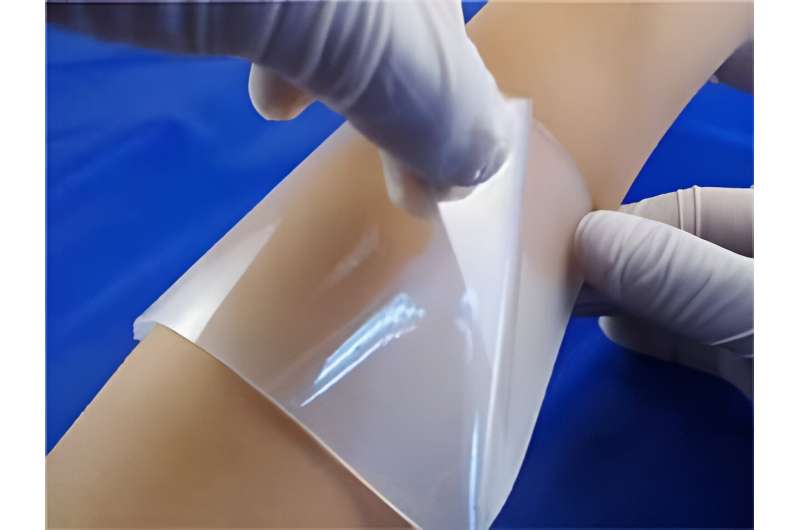This article has been reviewed according to Science X's editorial process and policies. Editors have highlighted the following attributes while ensuring the content's credibility:
fact-checked
proofread
Scientists develop new hydrogels for wound management

Open wounds, whether caused by accidents or from medical procedures like surgery, require proper management to speed up healing and prevent infections. While sutures and staples are common wound closure methods, they can cause secondary tissue injuries, potentially leaking fluids and gases and requiring anesthetics. Tissue adhesive glues are a more attractive alternative but often suffer from toxicity and weak adhesion.
Fortunately, tissue adhesive patches offer an innovative solution. They allow precise control of adhesion and mechanical properties through adjustable polymeric compositions. These patches can also deliver drugs directly to wounds, enhancing recovery. While existing adhesive patches containing catecholamines such as dopamine (DA) have shown promise, they face challenges due to slow oxidation and weak bonding with the polymer backbone.
Against this backdrop, a team of researchers from Korea, led by Associate Professor Kyung Min Park of Incheon National University set out to find an effective solution to these limitations. As reported in their latest study, which was published in Composites Part B: Engineering, they developed a new strategy to produce DA-containing tissue adhesive gelatin hydrogels.
Their approach is centered around the addition of calcium peroxide (CaO2) as an ingredient when preparing the hydrogel solution, giving rise to gelatin-based oxygen-generating tissue adhesives (GOTs). This compound reacts easily with water to release molecular oxygen (O2), facilitating the oxidation of DA molecules, promoting DA polymerization and healing of the wound.
"Oxygen is a critical metabolic substrate or signaling molecule in the body. In particular, hyperoxia, which essentially means high oxygen concentration, has been demonstrated to facilitate wound healing processes and tissue regeneration by promoting cell proliferation, blood vessel formation, and wound remodeling," explains Dr. Park.
Additionally, the researchers conducted in vitro and in vivo experiments demonstrating that their GOTs improved coagulation, blood closure, and neovascularization. These GOTs, in addition to their oxygen generation, allowed for easy control of gelation and mechanical properties, providing strong tissue adhesion in the 15–38 kPa range.
Remarkably, these GOTs represent the first reported bioadhesive, and the first tissue adhesive material for that matter, that can generate oxygen. The research team has high hopes for the potential of the GOTs to become a cost-effective solution for wound management in a clinical setting.
"We would like to pursue clinical trials and commercialization of this material through follow-up research and ultimately contribute to improving the quality of human life by developing next-generation tissue adhesive materials that can be applied to humans," concludes Dr. Park.
More information: Sohee Lee et al, Oxygen-generating tissue adhesives via CaO2-mediated oxygen generation and in situ catechol oxidation for wound management, Composites Part B: Engineering (2023). DOI: 10.1016/j.compositesb.2023.110951
Provided by Incheon National University





















